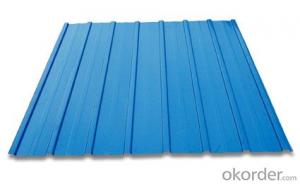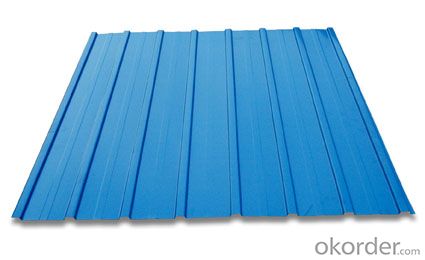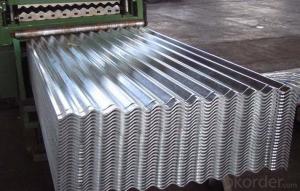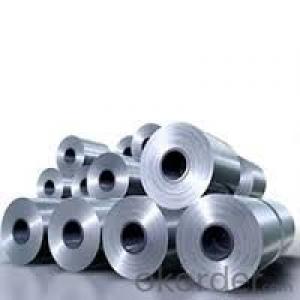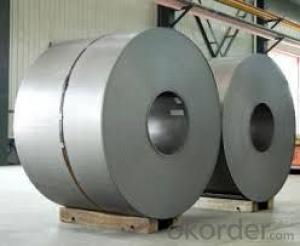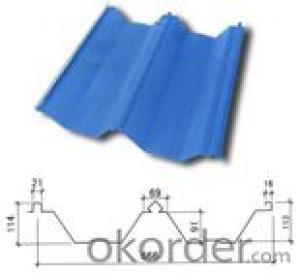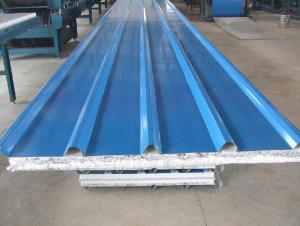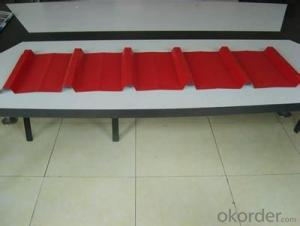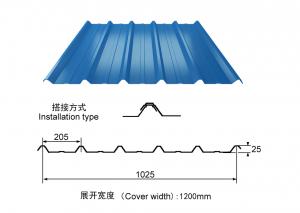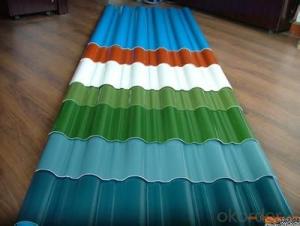corrugated colored steel sheets
- Loading Port:
- China Main Port
- Payment Terms:
- TT OR LC
- Min Order Qty:
- -
- Supply Capability:
- -
OKorder Service Pledge
OKorder Financial Service
You Might Also Like
Quick Details
| Standard: | Grade: | Thickness: | |||
| Place of Origin: | Brand Name: | Model Number: | |||
| Type: | Technique: | Surface Treatment: | |||
| Application: | Special Use: | Width: | |||
| Length: | Surface Treatment:: | Type:: | |||
| Material: | Color: |
Packaging & Delivery
| Packaging Detail: | According to international export standard or as your request |
| Delivery Detail: | with in 15 days after deposit |
Specifications
color corrugated roofing sheet
1)Model:828,840,V-900,V-910
2)Color:all RAL NO.
3) Thickness:0.2-0.6mm
corrugated colored steel sheets/prepainted metal roof/building materials is a new building materials made from high-quality color coated steel plate with automatic forming machine. It can substitute asbestos tile, glass steel tile and common roof materials. It has many advantages which can satisfy the demands of present various building style, such as easy installation, short building period, bump resistance, fireproof, corruption resistance, beauty, light weight but high strength.
Features
Width: 460 760 750 820 840 900 850 880.900 910.914
Length: according to customers' requirements
Thickness: according to customers' requirements
features of Color Coated Steel :
1.it is suitable for various climates, easy to be maintained, good endurance.
2.it is light, easy to be installed and heat insulation.
3. it has the characteristics of Fireproof and resistance of wind
4.Many colors available, with elegant and noble looking. It is widely used in factories, hotels, exhibitions, villas and civil construction.
5. It can substitute the traditional clayey tile and cement tile and save much land resources.
6. It can be recycled and good for environments.
7.it is easy to be used and transported, then it can save human and materials resources during building.
Application:
commercial use, structural use, household appliance, light industry, constructure
wear resistant steel, high-strength steel plate
Specifications
| product | color corrugated roofing sheet |
| Brand | ZHUWEI |
| supply ability | 5000 meters per day |
| base material | galvanized steel sheet |
| thickness | 0.2-0.6mm |
| width | 600-1250mm |
| quality | spcc,dx51d,sgcc,sgch |
| zinc-coating | 60-275g/m2 |
| technique | cold rolled-hot dipped galvanizing- corrugated |
| Payment Terms | T/T L/C D/A D/P |
| tolerance | thickness: +/- 0.02mm |
| width: +/-2mm | |
| feature | sheet metal roofing have excellent performance of decoration, corrosion resisitance etc. |
| package | 1. PVC film 2. Anti-water paper. 3. Metal |
- Q: Can steel sheets be used for electrical transformer cores?
- Yes, steel sheets can be used for electrical transformer cores.
- Q: Are steel sheets affected by UV radiation?
- Yes, steel sheets can be affected by UV radiation. Exposure to UV radiation can cause the steel sheets to undergo a process called photo-oxidation, leading to the formation of a surface layer of rust or corrosion. To prevent this, protective coatings or finishes are often applied to steel sheets to shield them from UV radiation and minimize its impact.
- Q: What is the tensile strength of steel sheets?
- The tensile strength of steel sheets varies depending on the grade and thickness, but it typically ranges from 300 to 2,500 megapascals (MPa).
- Q: Are steel sheets prone to warping or bending over time?
- Steel sheets are generally not prone to warping or bending over time. Steel is known for its high strength and durability, which makes it less susceptible to deformation compared to other materials. However, it is important to note that the thickness and quality of the steel sheet can affect its resistance to warping or bending. Thicker and higher-quality steel sheets are less likely to warp or bend. Additionally, proper installation and maintenance practices can also contribute to preventing warping or bending of steel sheets. Overall, steel sheets are considered a reliable and stable material that maintains its shape and integrity over time.
- Q: What is the difference between a hot rolled and hot dipped galvanized steel sheet?
- A hot rolled steel sheet is produced by rolling the steel at high temperatures, typically above 1,000 degrees Fahrenheit. This process allows the steel to be shaped and formed easily, resulting in a sheet with a rougher and less precise surface finish. Hot rolled steel sheets are commonly used in applications where strength and durability are key factors, such as in construction and structural projects. On the other hand, a hot dipped galvanized steel sheet goes through an additional process after being hot rolled. The steel sheet is immersed in a bath of molten zinc, which creates a protective coating on the surface of the steel. This coating provides excellent corrosion resistance and helps to prevent rusting, making hot dipped galvanized steel sheets ideal for outdoor and exposed applications. The main difference between the two types of steel sheets lies in their surface finish and protective properties. While hot rolled steel sheets have a rougher surface, hot dipped galvanized steel sheets have a smoother and more uniform appearance due to the zinc coating. Additionally, the galvanization process provides enhanced corrosion protection to the steel, extending its lifespan and making it suitable for harsh environments. In summary, hot rolled steel sheets are versatile and commonly used in various applications, while hot dipped galvanized steel sheets offer added protection against corrosion and are often preferred for outdoor or exposed applications.
- Q: What are the different types of steel sheet surface coatings for corrosion resistance?
- There are several types of steel sheet surface coatings available for corrosion resistance, including galvanized coatings, zinc-rich coatings, aluminum coatings, and organic coatings such as paint or epoxy. Each coating offers unique benefits and application suitability depending on the specific requirements and environmental conditions.
- Q: Are steel sheets suitable for food processing facilities?
- Yes, steel sheets are highly suitable for food processing facilities. Steel is a preferred material for food processing due to its numerous beneficial properties. Firstly, steel sheets are non-porous, meaning they do not absorb or retain moisture, bacteria, or odors, making them highly hygienic. This characteristic prevents the growth of bacteria and minimizes the risk of contamination, ensuring the safety and quality of the food being processed. Secondly, steel sheets are easy to clean and maintain. They can withstand frequent cleaning and sanitization procedures without corroding or degrading. Stainless steel, in particular, is resistant to corrosion, rust, and staining, making it an ideal choice for food processing facilities where cleanliness is of utmost importance. Furthermore, steel sheets have excellent durability and strength, ensuring longevity and reliability in food processing operations. They can withstand heavy use, high temperatures, and mechanical stresses that are common in food processing facilities. Steel sheets also have a high melting point, making them fire-resistant, which is crucial for the safety of the facility. Additionally, steel sheets are versatile and can be fabricated into various shapes and sizes to suit the specific needs of food processing facilities. They can be used for walls, floors, work surfaces, storage units, and equipment, providing a seamless and integrated solution for the facility's infrastructure. In summary, steel sheets are highly suitable for food processing facilities due to their hygienic properties, ease of cleaning, durability, and versatility. They contribute to maintaining a safe and sanitary environment, which is essential for the production of high-quality and uncontaminated food products.
- Q: Can steel sheets withstand extreme temperatures?
- Yes, steel sheets can withstand extreme temperatures. Steel has a high melting point and is known for its excellent heat resistance, making it suitable for use in various industries that require materials to endure extreme temperatures.
- Q: Can steel sheets be used for manufacturing furniture?
- Yes, steel sheets can be used for manufacturing furniture. Steel is a durable and versatile material that can be easily shaped and welded into various furniture designs. It is commonly used in the manufacturing of tables, chairs, and storage units due to its strength and ability to withstand heavy use.
- Q: What is the difference between hot dipped galvanized and electro galvanized steel sheets?
- The main difference between hot dipped galvanized and electro galvanized steel sheets lies in the process of coating. Hot-dipped galvanized steel sheets are coated by immersing them in a bath of molten zinc, which creates a thicker and more durable layer of zinc compared to electro galvanized steel sheets. On the other hand, electro galvanized steel sheets are coated by an electrolytic process, where a thin layer of zinc is applied to the steel surface. This makes electro galvanized steel sheets more suitable for applications that require a thinner coating and a smoother finish, while hot-dipped galvanized steel sheets provide excellent corrosion resistance and are often used in more heavy-duty applications.
Send your message to us
corrugated colored steel sheets
- Loading Port:
- China Main Port
- Payment Terms:
- TT OR LC
- Min Order Qty:
- -
- Supply Capability:
- -
OKorder Service Pledge
OKorder Financial Service
Similar products
Hot products
Hot Searches
Related keywords
